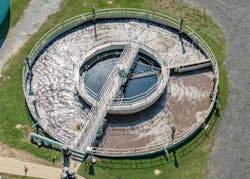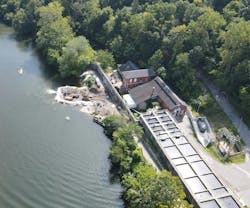Five critical pillars that will define the water utility of the future
Key Highlights
- Prioritize infrastructure replacement based on risk and condition data to avoid costly emergencies and optimize resource allocation.
- Secure funding early through grants, low-interest loans, and technical assistance to meet regulatory deadlines and infrastructure needs.
- Implement incremental, transparent rate increases linked to service improvements to ensure financial stability and public trust.
- Utilize AI and standardization to streamline project design, reduce costs, and accelerate project delivery without compromising quality.
- Invest in public education and communication to build trust, explain project necessity, and garner community support for ongoing and future initiatives.
Water utilities across the United States are under unprecedented strain. From aging infrastructure and rising treatment costs to evolving contaminants and unfunded mandates, public systems face mounting complexity with limited resources. Yet in this challenging period lies a critical moment of transformation. Utility leaders have an opportunity to pivot, adopting smarter tools, better data, stronger communication, and longterm planning frameworks to ensure their systems remain reliable and owner affordable. The five takeaways that follow offer a practical, forward-looking playbook for building water utility resilience in the years ahead.
1. Data-driven prioritization is key
The urgency to replace aging infrastructure is real. Many systems are still relying on water mains installed over 75 years ago. While 75 years might seem like a typical industry acceptable lifespan, variables like pipe materials, acidic soil, poor installation, or groundwater can dramatically shorten that timeline. The challenge? Most utilities lack comprehensive data on where failures are likely to occur.
Effective asset management starts with asking the right questions: Where do frequent water main breaks happen? Where are customer complaints most common? Where is the pressure highest, or soil most corrosive? These indicators are often surprising to utility leaders but are essential to risk-based prioritization.
Rather than replace pipes on a first-come, first-served basis, utilities are beginning to prioritize assets by condition, risk of failure, and service impact. For example, a 20-inch transmission main servicing half of the service area is far more critical than an 8-inch line serving three homes. By implementing GIS tools and ranking systems, utilities create defensible, logical investment plans — and avoid costly, last-minute emergencies that can double costs and leave communities without essential services.
2. Funding options exist, but utilities must act early
Once priorities are identified, the next step is securing the financial resources to act. Planning without funding leads to delayed improvements, but opportunities do exist for utilities that move proactively.
Consider also that regulations are evolving faster than funding as evidenced by the October 2024 federal mandate requiring inventory and replacement of all lead and galvanized service lines within 10 years. While partially funded at the federal and state levels, this directive will place immense strain on utilities that wait too long to prepare.
Proactive utilities are already assembling funding game plans — pursuing state revolving funds, evaluating eligibility for population- and affordability-based grants, and securing low-interest loans. With proper planning, even small utilities can tap into technical assistance programs that offer both money and technical expertise.
One of the most important questions utilities must ask: Can we afford this with existing funds? If not, what external sources are available? Identifying and acting on funding early avoids the scramble that occurs when deadlines loom.
Under these greater pressures, the stakes have risen. When funding runs out or projects stall, systems consider selling to private utilities as an alternative. For many public systems, the choice is clear: raise rates and strategically invest in infrastructure, or sell the utility system.
3. Incremental rate increases prevent financial crises
With funding mechanisms identified, the conversation inevitably turns to rate structures — often a politically charged and complex topic. Oftentimes, this is the greatest challenge utility leaders face.
Water rates are notoriously undervalued, and many municipalities go years without revisiting them, due to competing priorities or concerns about public response. But the cost of delay is steep. Deferred rate increases create financial strain over time, potentially resulting in budget shortfalls, unplanned project costs or longterm fiscal challenges. The smarter path? Small, transparent, and regular increases that are tied directly to service improvements.
By conducting a 10-year cost analysis that includes both mandated improvements and aging infrastructure needs, utilities can build a stable and predictable financial plan. Communicating this to ratepayers and governing bodies is critical. When rate hikes are linked to tangible benefits — fewer breaks, safer water, regulatory compliance — public resistance diminishes.
Still, many utilities are shocked when financial modeling reveals the rates they should be charging. That’s where leadership and community engagement come in. Phase-in strategies, clear messaging, and public engagement can build understanding and public trust. Ultimately, delaying action only compounds the burden on future ratepayers.
4. AI and standardization can enhance efficiency
Of course, financial stability alone is not enough — utilities must also rethink how projects are delivered to maximize every dollar and reduce project delays. With rising costs and prolonged equipment lead times, utilities can no longer afford inefficiency.
Designing a water treatment plant, for example, involves thousands of decisions — treatment selection, equipment sizing, electrical layouts, and pump placement. Traditionally, engineers start from scratch each time, a costly and time-intensive process.
AI is changing the design, engineering and construction landscapes. By inputting key design parameters, engineers can now use AI tools to support their efforts to rapidly generate conceptual layouts, size equipment, and identify potential design gaps. This approach can enhance efficiency and help deliver high quality solutions through value engineering.
Similarly, embracing standardized design elements across projects avoids the trap of reinventing the wheel. While every site has unique topography or design needs, core components like water mains, valves, and treatment modules can be standardized with a client to streamline procurement, permitting, and construction. Efficiency does not mean compromise. It means applying innovation and proven best practices to deliver faster, higher-quality results at lower cost.
5. Education builds public trust
None of these strategies — prioritization, funding, rate increases, or design innovation — will succeed without public trust. And trust hinges on communication. In fact, it is one of the most overlooked tools in the utility resilience toolbox, particularly in the water industry where no news is considered good news.
Many communities do not understand why rates are increasing or why upgrades are needed. They do not see the miles of aging pipe underground or grasp the urgency behind emerging contaminants like PFNAs. That lack of understanding can stall projects and erode public support. That is why education is so essential.
From public meetings to ratepayer mailers, utilities that clearly explain what is at stake for their communities — and how investments will benefit those communities — are more likely to secure public understanding and support. It is important to emphasize that small systems face the same regulatory and technical burdens as large ones, but with fewer resources. Every project, no matter the size, requires significant effort, planning, and cost.
Clients also benefit from understanding why projects take time. Delays are often due to long lead times, permitting hurdles, or complex water chemistry that requires pilot testing and affects treatment outcomes. A clear, honest explanation goes a long way in building trust.
Looking ahead: The case for leadership
When communication, funding, prioritization, and innovation come together, utilities position themselves not just to survive but to lead. There is no silver bullet for the challenges water utilities face. Emerging contaminants will keep coming. Aging infrastructure will continue to age. Regulations will grow more complex. And costs are unlikely to drop.
But utilities that take a proactive, strategic approach — grounded in data, funding foresight, innovation, and communication — can chart a different path. They can avoid a crisis, and strengthen long term utility stability. The message is clear: Prioritize smartly. Fund early. Communicate constantly. And plan not just for compliance, but for legacy.
The water systems we steward today must serve not only our communities, but generations to come.
About the Author
Stephanie Cuthbert
Principal and Executive Vice President Water & Wastewater Division with Remington & Vernick Engineers
Stephanie Cuthbert, P.E., C.M.E. is principal and executive vice president water & wastewater division with Remington & Vernick Engineers. She can be reached at [email protected].


